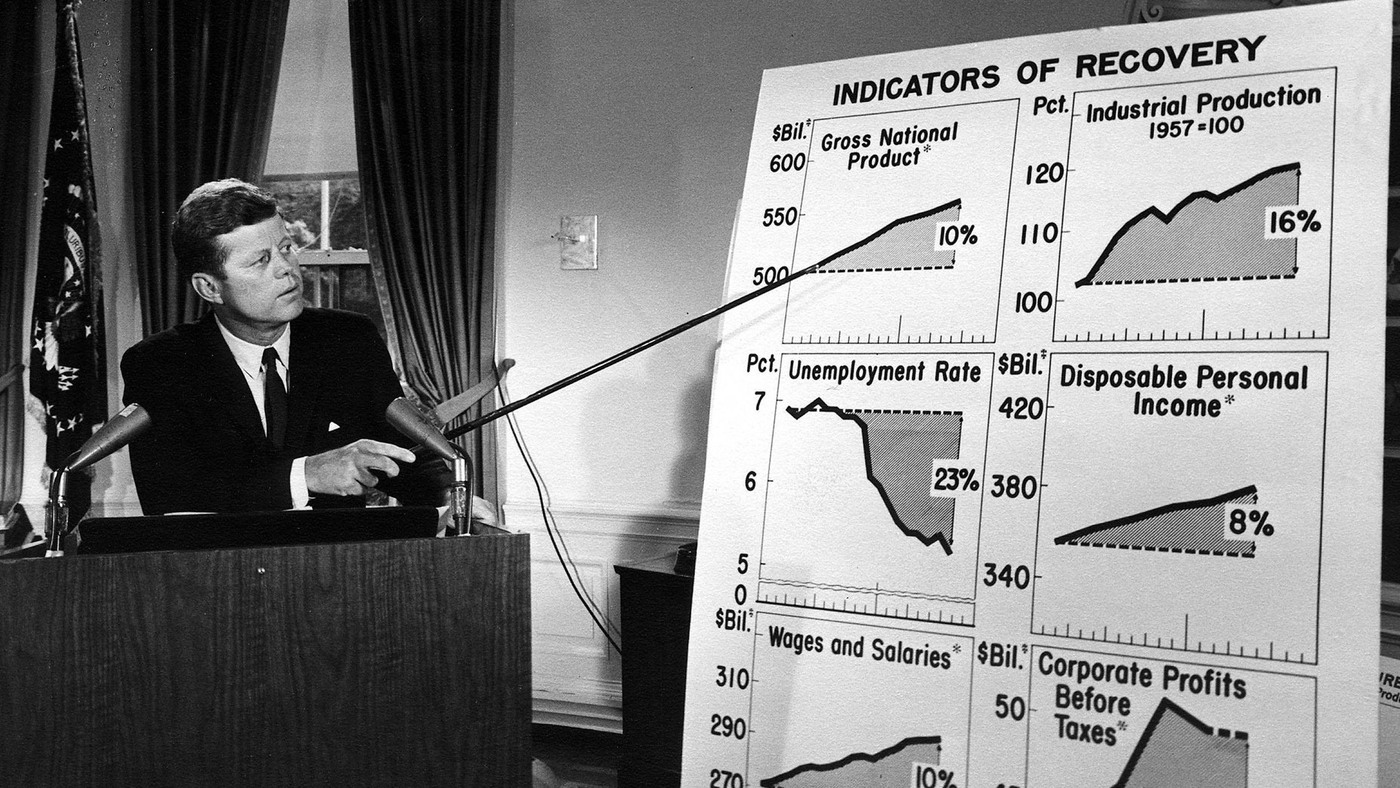Trump's Economic Legacy: Fact Vs. Fiction In The Numbers

Table of Contents
Job Growth and Unemployment Under Trump
Analyzing the Unemployment Rate
The unemployment rate during Trump's term saw a general downward trend, reaching a 50-year low of 3.5% before the COVID-19 pandemic. This was a significant improvement from the 4.7% rate he inherited from the Obama administration. However, comparing this solely to Obama's last year is a simplification, ignoring the broader economic trends and cyclical nature of unemployment.
- 2017-2019: The unemployment rate consistently decreased, reaching historic lows. This period saw robust job growth across various sectors.
- Sectoral Variations: While overall job growth was positive, the distribution wasn't uniform. Some sectors experienced significant growth, while others faced challenges. Analyzing job creation in manufacturing, technology, and services reveals a more nuanced picture.
- Policy Impact: Tax cuts and deregulation were cited by the Trump administration as key contributors to job growth. The effectiveness of these policies remains a subject of ongoing debate among economists.
Wage Growth and Income Inequality
While unemployment decreased, the impact on wage growth and income inequality is more complex. Average wages did increase, but the benefits weren't evenly distributed.
- Average Wage Increases: Data shows modest increases in average wages, but these increases were not necessarily keeping pace with the cost of living in many areas.
- Median Household Income: Examining median household income provides a more accurate reflection of the financial well-being of the typical American family. While there was some growth, the pace wasn't drastically different from previous administrations.
- Gini Coefficient: The Gini coefficient, a measure of income inequality, remained relatively stable during the Trump years, indicating that the gap between the rich and the poor didn't significantly narrow.
Economic Growth and GDP
GDP Growth Rates
Annual GDP growth rates fluctuated during the Trump administration. While there were periods of robust growth, these were often followed by slower periods. Comparing these rates to previous administrations requires careful consideration of external factors.
- Strong Growth Periods: Certain years witnessed notably high GDP growth, fueled by factors like increased consumer spending and business investment.
- Slowdown Periods: Other periods experienced slower growth, partly attributed to global economic uncertainty and trade disputes.
- External Factors: Global economic conditions, such as fluctuations in oil prices and international trade tensions, significantly influenced GDP growth.
National Debt and Deficit
The national debt increased significantly under the Trump administration, primarily due to a combination of tax cuts and increased government spending.
- Tax Cuts and Spending: The 2017 Tax Cuts and Jobs Act reduced corporate and individual income taxes, leading to a substantial increase in the budget deficit.
- Increased Spending: Government spending also increased on defense and other programs, further contributing to the growing national debt.
- Long-Term Implications: The long-term implications of this increased debt remain a significant area of concern for economists and policymakers.
Trade Policies and Their Impact
Tariffs and Trade Wars
Trump's administration implemented significant tariffs on goods from various countries, leading to trade wars with major economies like China. These tariffs had mixed effects on the US economy.
- Impact on Prices: Tariffs increased the prices of imported goods, impacting consumers and businesses.
- Retaliatory Measures: Other countries retaliated with their own tariffs, harming US exporters.
- Winners and Losers: Some sectors benefited from tariffs, while others suffered significant losses.
Impact on Manufacturing and Agriculture
Trump's trade policies had a significant impact on specific sectors, such as manufacturing and agriculture.
- Manufacturing: While some manufacturing jobs were created, others were lost due to trade wars and global economic conditions.
- Agriculture: Farmers faced significant challenges due to trade disputes with countries like China, leading to reduced exports and market instability.
- Long-Term Competitiveness: The long-term impact on the competitiveness of these sectors remains to be seen.
Regulation and Deregulation
Deregulation Efforts
The Trump administration pursued significant deregulation across various sectors, aiming to reduce the burden on businesses.
- Environmental Regulations: Environmental regulations were significantly rolled back, raising concerns about potential environmental damage.
- Financial Regulations: Regulations implemented after the 2008 financial crisis were also weakened, sparking debate about potential risks to financial stability.
- Impact on Innovation: The effect of deregulation on innovation and economic growth is a complex area needing further analysis.
Impact on Environmental Protection
Deregulation in the environmental sector had significant consequences, potentially impacting both the environment and the economy.
- Pollution Levels: Reduced environmental regulations could lead to increased pollution levels, affecting public health and the environment.
- Climate Change: The rollback of climate change mitigation policies could have long-term negative consequences for the global climate and the US economy.
- Long-Term Costs: The long-term economic costs of environmental damage may outweigh the short-term benefits of deregulation.
Conclusion
Trump's economic legacy is multifaceted and complex. While the unemployment rate reached historic lows and GDP growth was positive in certain periods, these achievements were accompanied by a substantial increase in the national debt, trade disputes, and deregulation with potentially negative long-term consequences. Analyzing the data reveals both positive and negative aspects, defying simple narratives. Understanding Trump's economic legacy requires ongoing analysis and critical evaluation of the available data. Continue to explore the data and form your own informed conclusions about the complex impacts of his policies. Further research into Trump's economic legacy will help us understand these complex interactions fully.

Featured Posts
-
 Milwaukee Brewers Offensive Struggles Lead To Lineup Juggling
Apr 23, 2025
Milwaukee Brewers Offensive Struggles Lead To Lineup Juggling
Apr 23, 2025 -
 Reds Suffer Third Consecutive 1 0 Defeat
Apr 23, 2025
Reds Suffer Third Consecutive 1 0 Defeat
Apr 23, 2025 -
 The Untold Stories Of Chalet Girls Luxury Hard Work And Reality
Apr 23, 2025
The Untold Stories Of Chalet Girls Luxury Hard Work And Reality
Apr 23, 2025 -
 American Whiskey Showdown 2025s Best According To The Whiskey Wash
Apr 23, 2025
American Whiskey Showdown 2025s Best According To The Whiskey Wash
Apr 23, 2025 -
 Yelich Homers First Time Since Back Surgery Recovery
Apr 23, 2025
Yelich Homers First Time Since Back Surgery Recovery
Apr 23, 2025
